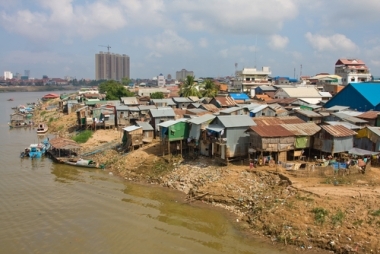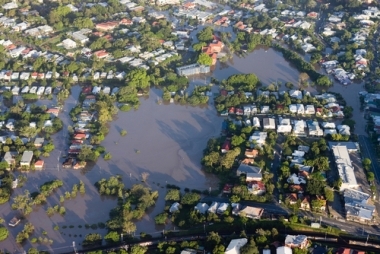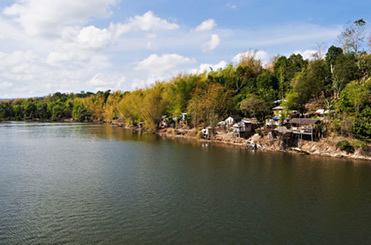The urbanization of society happened unevenly around the world. Countries considered “central” first witnessed their urbanization processes, although other ancient civilizations also presented their urban space. With the colonization process and the consequent underdevelopment, urbanization in peripheral countries was only consolidated in the mid-twentieth century, as a result of the late industrialization of these countries.
The fact is that the different urbanization processes are directly linked to industrialization and all of them present both social and environmental problems. Many of these problems are not only linked to the urbanization process itself, but also to the poor distribution of income and social contradictions.
urban social problems
Among urban social problems, the issue of urban segregation, as a result of the concentration of income in the space of cities and the lack of public planning aimed at promoting policies to control the disorderly growth of cities. Real estate speculation favors the increase in prices of places closer to large centers, making them inaccessible to the large population. In addition, as cities grow, areas that were once cheap and easily accessible become more expensive, which contributes to the vast majority of the poor population looking for housing in regions even more distant.
These people suffer from the great distances from their places of residence to commercial centers and places where work, since the overwhelming majority of the inhabitants who suffer from this process are low-income workers. salary. This includes the precarious conditions of public transportation and the bad infrastructure of these segregated areas, which sometimes do not have basic sanitation or asphalt and have high rates of violence.
Real estate speculation also accentuates a growing problem in the space of large, medium and even small cities: the issue of vacant lots. This problem occurs for two main reasons: 1) lack of purchasing power of the population that owns land, but does not has conditions to build on them and 2) waiting for the lots to appreciate so that they become more expensive for a sale later. These vacant lots usually present problems such as accumulation of garbage, tall weeds, and end up becoming hotbeds of diseases such as dengue.
Among urban social problems, however, the main one is the process of slums. This is also associated with the concentration of income, unemployment and lack of urban planning. Many people, because they do not have the financial conditions to pay for their homes, end up finding no other way out than to occupy them properly. irregular (through invasions) areas that generally do not have favorable characteristics for housing, such as hills with high slope.

Occupation in irregular areas in Cambodia
The formation and proliferation of slums is the main denunciation of social inequalities in the urban space and they are characteristic elements of large metropolises, such as São Paulo, Rio de Janeiro, Mexico City and many others. It is worth remembering that this is not a phenomenon exclusive to poor countries. The UN estimate is that by 2030, more than 2 billion people will be living in slums around the world.
Do not stop now... There's more after the advertising ;)
urban environmental problems
Many of the urban environmental problems are directly linked to social problems. For example: the slum process contributes to the aggression to the environment, since the irregular occupations usually occur in conservation zones or in places close to rivers and courses. of water.
Furthermore, it is known that environmental problems, whether urban or not, are products of man's interference in nature, transforming it according to its interests and exploring its resources in search of profit maximization without worrying about the consequences.
The segregated areas, the poorest places in the city, are usually the stage for the consequences of human action on the natural environment. Problems like the floods are routinely reported. And it's not the rain's fault.
In some cases, the flooding process in a given region is natural, that is, it would happen with or without human intervention. The problem is that, often, due to lack of public planning, subdivisions and neighborhoods are built in regions that make up risky areas. In other words, in times of drought, houses are built in places that are part of river beds and, when these rivers pass through the floods, they end up flooding these houses.
In other cases, the formation of floods is linked to urban pollution or infrastructure conditions, such as the waterproofing of the soil through the construction of paved streets. The water, which would normally infiltrate the soil, ends up having nowhere to go and flows into rivers, which accumulate, overflow and cause floods.

City of Brisbane, Australia, suffering from flooding in 2011
Another very common urban environmental problem is the phenomenon of heat islands, which takes place in the central regions of large cities. This situation is a consequence of the verticalization process, that is, the formation of buildings that limit air circulation and, added to the removal of trees, contributes to the concentration of heat. That's why central or highly urbanized regions are always warmer than the rest of the city.
To add to the heat islands, there is also the thermal inversion, a climatic phenomenon that hinders the dispersion of pollutants emitted by human action. As a result, toxic gases hover over the surface of cities, causing respiratory illnesses and rising temperatures.
The lack of public planning and the absence of greater environmental awareness constitute urban environmental problems, such as water pollution in rivers, lakes and oceans, the increase in temperatures, the occurrence of acid rain (the result of the emission of toxic gases into the atmosphere), all of this added to visual and noise pollution.
By Rodolfo Alves Pena
Graduated in Geography
Of the alternatives below, all represent problems experienced in urban space, EXCEPT:



